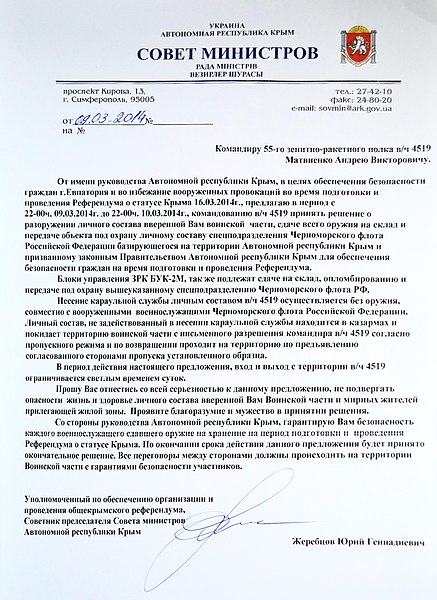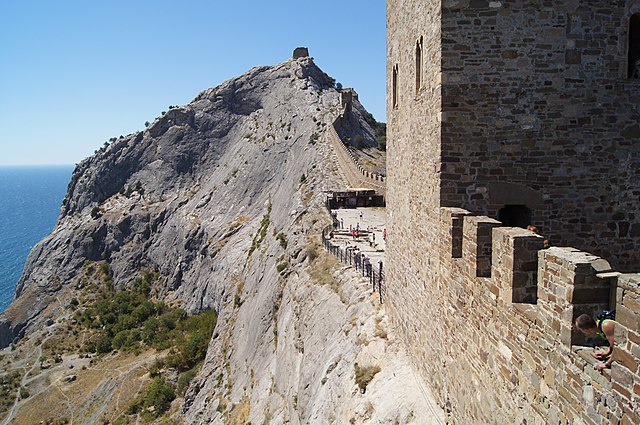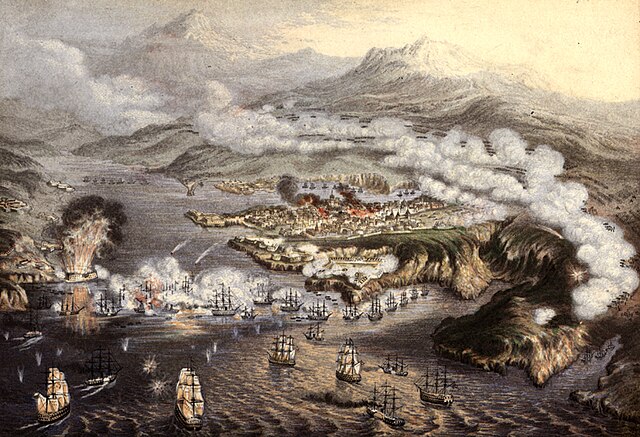2014 Crimean status referendum
The Crimean status referendum of 2014 was a disputed referendum on March 16, 2014, concerning the status of Crimea that was conducted in the Autonomous Republic of Crimea and the city of Sevastopol after Russian forces seized control of Crimea.
Request made in Russian language by the Ukrainian Council of Ministers of Crimea to the Ukrainian 55th Anti-Aircraft Artillery regiment in Yevpatoria to lay down arms under control of the Russian Black Sea Fleet for the period of the referendum.
Vladimir Putin (third, left), Sergey Aksyonov (first, left), Vladimir Konstantinov (second, left) and Aleksei Chalyi (right) sign the Treaty on Accession of the Republic of Crimea to Russia
Russian President Putin meeting with representatives of the Crimean Tatars, 16 May 2014
Crimea is a peninsula in Eastern Europe, on the northern coast of the Black Sea, almost entirely surrounded by the Black Sea and the smaller Sea of Azov. The Isthmus of Perekop connects the peninsula to Kherson Oblast in mainland Ukraine. To the east, the Crimean Bridge, constructed in 2018, spans the Strait of Kerch, linking the peninsula with Krasnodar Krai in Russia. The Arabat Spit, located to the northeast, is a narrow strip of land that separates the Syvash lagoons from the Sea of Azov. Across the Black Sea to the west lies Romania and to the south is Turkey. The largest city is Sevastopol. The region has a population of 2.4 million, and has been under Russian occupation since 2014.
May 2015 satellite image of the Crimean Peninsula
Ruins of the ancient Greek colony of Chersonesus
Genoese fortress in Sudak, 13th century, Republic of Genoa, originally a fortified Byzantine town, seventh century
The 11-month siege of Sevastopol during the Crimean War







